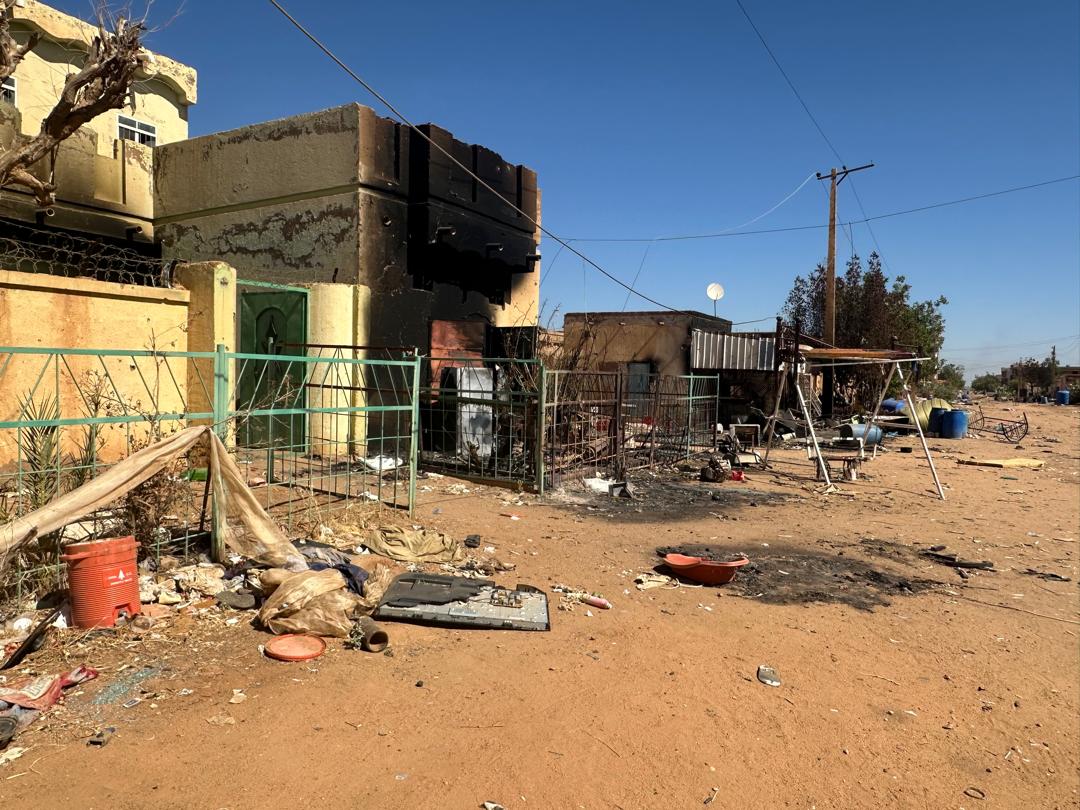Sudanese Media Forum: Joint News Room
Prepared and Edited by: Sudan Tribune
KHARTOUM, January 8, 2025 – The Sudanese army is advancing cautiously on several fronts in Khartoum state, particularly in northern Khartoum Bahri, amid fierce clashes with the paramilitary Rapid Support Forces (RSF), while also evacuating civilians trapped in the crossfire.
On the Bahri front, the army has made progress, battling through the Shambat suburb while avoiding main roads like Al-Mo’na and Al-Inqaz. In house-to-house fighting, they have reached a street separating Al-Safiya from Shambat, south of Shambat.
The army is evacuating civilians with each southward push. These operations underscore the challenges of urban warfare, a new experience for Sudan’s military.
Evacuations from Shambat to safer areas like Al-Droushab and Al-Kadaro are particularly hazardous, with soldiers operating under RSF sniper fire. Residents say the distance between warring factions is as little as 200 meters in some places.
Army Tactics and RSF Defences
In Shambat, the Sudanese army is using a strategy of gradual advance through side streets, avoiding the main Al-Mo’na and Al-Inqaz roads. This avoids RSF snipers positioned in high-rises overlooking those streets. This mirrors tactics used previously to break a siege on the army’s Engineering Corps in Omdurman. The aim is to isolate snipers from ground support, forcing their surrender or retreat. This has enabled the army to secure Al-Hijaz towers and Al-Mashreq University, north of Shambat.
Early in the conflict, the RSF inflicted heavy losses on the army, causing significant casualties and destroying or capturing military vehicles. This resulted from the army’s initial reliance on rapid advances along main roads.
A military source told Sudan Tribune that RSF snipers are still entrenched in a five-tower complex of police officers’ residences, overlooking key streets in the area. The source said the southward advance would become increasingly difficult due to the density of high-rise buildings. However, he added the army has strategies to overcome this challenge.
The RSF is fiercely resisting the army’s advance towards the Signal Corps, south of Bahri, to maintain its siege on the army’s General Command in Khartoum. An RSF counterattack on the strategic Al-Hijaz towers early Saturday was repelled, with heavy losses, according to the source. The source said they attacked army fortifications on motorcycles and civilian vehicles.
The army launched airstrikes and artillery shelling at dawn on Saturday, targeting RSF movements north of Shambat, Sudan Tribune has learned.
Fighting in Omdurman and Al-Shigla
On the southern Omdurman front, the army has advanced towards Al-Shigla, a gateway to Omdurman Islamic University and the RSF stronghold of Al-Salha. Al-Salha, with access to western Sudan, is a major stronghold for the RSF.
Army forces are using the same tactic of advancing through side roads, avoiding the main road to circumvent RSF positions. On this front, the army has taken control of the Al-Dhahabi Building, a key five-story high-rise in Al-Shigla. A road from this intersection leads west towards the Fattasha military training camp.
The RSF had used the Al-Dhahabi Building, the tallest in the area, as a forward arming post and a sniper position. The area around the building shows signs of intense fighting, with damaged buildings and the bodies of RSF fighters yet to be buried.
Highly destructive RSF drones are targeting vehicles in Al-Shigla to prevent an army advance towards the university. The RSF knows that army control of the university would enable it to retake Al-Salha and reach the Jabal Awliya reservoir.
Army units have evacuated civilians from Al-Shigla, many trapped since the war began in mid-April. They were evacuated to schools in Al-Fitehab under extremely difficult conditions. Evacuees face severe food shortages, water and electricity cuts, and forced conscription of young men by the RSF, according to those evacuated.
Fighting has intensified in Umbada, west of Omdurman, with the army approaching the major Libya Market. However, a fighter with the auxiliary forces told Sudan Tribune that protecting civilians, who remain in large numbers, is a major challenge.
Khartoum Fronts
A cautious calm prevails on the Al-Mogran and Armored Corps fronts in Khartoum. In September, the army crossed the White Nile bridges to Al-Mogran, neutralizing RSF snipers. Simultaneously, it advanced from the Armored Corps, taking Al-Lamab and nearing the Al-Rawad towers, used by RSF snipers.
Military sources say further progress depends on a breakthrough in northern Bahri to link with besieged forces in the Signal Corps and advance towards the General Command. Breaking the siege would allow for troop rotation and new supply lines, creating a more effective combat axis and implementing a strategy of tight encirclement.
However, the large number of civilians within the battle lines poses a major challenge, complicated by increasing RSF accusations of civilians spying for the army after each army advance, the military source added.
This report is published simultaneously on the platforms of media institutions and organizations and newspapers that are members of the Sudanese Media Forum. #SilenceKills #NoTimeToWasteForSudan #StandWithSudan #SudanMediaForum
